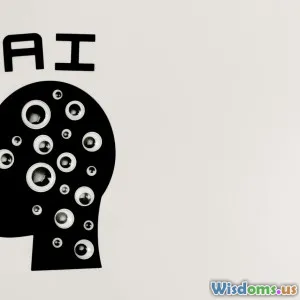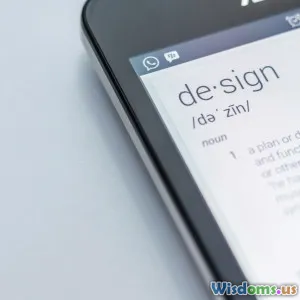
Innovative Design Solutions with AI
5 min read Explore how AI is transforming graphic design with innovative solutions that enhance creativity and streamline workflows. (0 Reviews)
Innovative Design Solutions with AI
In the fast-paced world of graphic design, innovation is key. With the advent of artificial intelligence (AI), designers now have access to groundbreaking tools that not only enhance creativity but also streamline workflows. This article explores the intersection of graphic design and AI, highlighting innovative solutions that are transforming the industry.
The Role of AI in Graphic Design
AI is increasingly becoming a vital part of the graphic design process. By automating repetitive tasks, AI allows designers to focus on the creative aspects of their work. From image recognition to generative design, AI technologies are creating new opportunities for designers to explore their creativity in ways previously thought impossible.
Automating Repetitive Tasks
One of the most significant benefits of AI in graphic design is its ability to automate time-consuming tasks. For example, tools like Adobe Sensei use AI to analyze images and suggest edits, removing the need for manual adjustments. This not only saves time but also allows designers to experiment with more ideas without being bogged down by tedious details.
Generative Design
Generative design is a cutting-edge application of AI that uses algorithms to create design options based on specified parameters. This technology enables designers to input criteria such as materials, manufacturing methods, and cost constraints, allowing the AI to generate multiple design solutions. Companies like Autodesk have pioneered this technology, providing designers with a toolbox that enhances creativity while adhering to practical constraints.
Personalization and User Experience
AI also plays a crucial role in creating personalized designs that enhance user experience. By analyzing user behavior and preferences, AI can suggest design elements that resonate with specific audiences. For instance, platforms like Canva leverage AI to tailor design templates and layouts to users' preferences, making the design process more intuitive and effective.
AI-Powered Design Tools
Numerous AI-powered tools are available today that can assist graphic designers in various aspects of their work:
- Canva: This user-friendly design platform incorporates AI to suggest layouts, images, and color palettes based on user inputs.
- Adobe Illustrator: With features like Adobe Sensei, Illustrator automates tasks like image tracing and color matching, allowing designers to work more efficiently.
- Designhill: This graphic design platform uses AI to create logos and branding materials based on user specifications, making design accessible to non-designers.
- Looka: An AI-driven logo maker that generates unique logo designs based on a few user inputs, streamlining the branding process.
Enhancing Collaboration
AI is also fostering collaboration among designers. Tools that utilize AI can analyze feedback and suggest design improvements, allowing teams to work together more effectively. By leveraging AI, designers can share insights and data-driven suggestions, ultimately leading to more cohesive and innovative design outcomes.
Challenges and Considerations
While AI offers numerous benefits, it also presents challenges. Designers must consider ethical implications, such as copyright issues related to AI-generated designs. Additionally, there is a concern about the potential for AI to replace human creativity rather than augment it. It is essential for designers to strike a balance between leveraging AI tools and maintaining their unique creative vision.
Conclusion
The integration of AI into graphic design is ushering in a new era of innovation. By automating tasks, generating unique design options, and enhancing collaboration, AI is empowering designers to push the boundaries of creativity. As technology continues to evolve, it is crucial for designers to embrace these advancements while remaining mindful of the ethical considerations involved. The future of graphic design is bright, and AI is proving to be a valuable ally in the creative process.
Rate the Post
User Reviews
Popular Posts





















